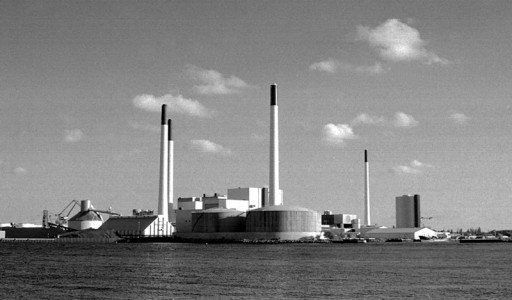As I’ve written about extensively, EPA is rolling out a series of new pollution regulations that will have some impact on the power industry. Exactly what that impact will be, and what effect it will have on consumers, is in some dispute. Everyone agrees that the rules will drive the retirement of some older coal plants. But how many? And will the retirements affect rates or reliability?
Industry warns that EPA regs will prove ruinous, raising electricity rates, punishing poor ratepayers, and threatening system reliability. Then again, industry has said that about every single previous pollution regulation and they are always, always wrong. (Here’s the latest industry-backed scare story, being taken seriously by the media as always.)
Most independent analyses, however, find that the power industry can handle the transition with minimal cost and no threat to reliability, as long as it manages things intelligently. For example, Reuters recently covered a new analysis from consultancy ICF. They found that up to 20 percent of the U.S. coal fleet will be retired within the decade, in part due to new EPA rules. However:
This type of large-scale retirement can be accommodated without sacrificing system reliability, provided that the retirements are undertaken in a coordinated manner and with sufficient flexibility.
Again, this is the consensus position of experts not in the employ of the power industry. It’s worth keeping in mind as you hear increasingly hysterical and ridiculous statements from Republicans about the dangers of regulation.
All that said, the Bipartisan Policy Center (BPC) has a new report suggesting that even the modest costs described in the other reports may be overstated.
Here’s something the BPC emphasizes that’s not often clear in media accounts: There’s going to be a ton of coal retirements no matter what the EPA does. The U.S. coal fleet includes a large number of plants that are small and inefficient, with no pollution controls, well past their sell-by date. Those plants are already becoming uneconomic to maintain.
For example, EEI’s January 2011 analysis projected 22 GW of coal retirements in the reference case (i.e., with no new regulation) by 2015. In its October study, NERC reported that 13 GW of upcoming retirements were already announced or committed, prior to EPA’s proposals for Utility Air Toxics and cooling water rules.
So the question is how many additional coal plant retirements EPA regs will drive, and whether the system can handle it. On the “handle it” score, BPC finds roughly the same thing other studies have found:
The report finds that the impacts on the reliability of the electric system due to EPA regulations are manageable and that there are tools available at the Federal, state, and local levels to address localized reliability risks.
However, the analysis of coal-plant retirements comes to a bit of a different conclusion:
BPC review of existing studies and our own modeling suggests that the actual number of retirements due to EPA regulations will be at the lower end of the range of published projections.
Why the lower end? Two reasons.
First, most studies model strong regs of the sort we naive liberals though Obama’s EPA would pass, back when we had hope. Since then EPA has been vigorously delaying and watering down regulations, which indicates that the regs probably won’t be as strong as those typically modeled.
Second, BPC includes the dynamic effects of regs on the marketplace. As the regs force coal plants into retirement, they’re expected to slightly raise the price of electricity, which will improve the financials of some other coal plants on the margins.
Overall:
BPC assumptions result in a projected 15-18 GW of incremental coal plant retirements by 2015 from the suite of EPA regulations, with no additional incremental retirements through 2030.
That’s on the low end of coal plant retirements projected by other studies.
In summary: Even the modest cost of new EPA regulations projected by most independent analyses may be exaggerated. Cleaning up the U.S. electricity sector is doable, technically and economically. It’s politically that’s the hard part.


